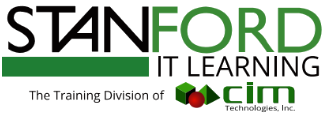VERSATILITY IN THE MODERN BUILDING AGE: Improve Aesthetics, Workflow and Collaboration with Building Information Modeling
Providing the criticality of each stage of any construction projects, having organized workflow, collaboration and distinct visuals have become imperative. With a proper set of tools, stakeholders would be able to achieve these qualities and would allow them to carefully plan and track their projects. A lot of approaches have been proliferating in the industries that promised to better design and manage their construction projects, and one of these and probably the most sought-after approach/ process is the Building Information Modeling or BIM.
To better instill this process, Stanford IT Learning, the training division of CIM Technologies, Inc. conducted a whole-day workshop last December 4, 2018, Tuesday at its office in Makati City. The workshop focused on BIM comprising Revit Architecture, Navisworks and BIM360 which are all building/ design software of Autodesk. The workshop was attended by a number of professionals from several building and design companies in the country.
The Workshop...
For the first session, attendees were immersed to Revit Architecture, a BIM software that provides architects and designers with the tools they need to develop accurate, higher-quality architectural designs. Attendees were given a brief discussion about its usage and its implication in the project. The benefits were underscored in the activity such as how Revit Architecture, as a BIM software, can help designers or architects to maximize their productivity, improve the streamline of their design and documentation workflows and accelerate the design to completion stage of the project. To better understand the software, attendees were given an opportunity to explore the software by doing a few BIM exercises.
To see and reduce potential clash and interference problems before construction, Navisworks was also introduced and discussed in the activity. Utilizing this software during the second session, attendees learned more about its capacity as a tool that would aid the designers in reducing potential clash and interference problems before construction. Having a hands-on training on this, attendees also witnessed how Navisworks can become a very efficient method to enhance coordination among building systems and can reduce costly remedies after completion and during construction.
Lastly, the activity was wrapped up by having introduced BIM360 docs. Attendees figured out that a seamless streamline of construction-related documents is easily managed through BIM360 which is an indispensable characteristic of a good construction document management software. Attendees were also given a few exercises to maximize their experience in BIM360 and discover further its capability.
With the intensified competition in the industry, Stanford IT Learning continues to help professionals in the building and design industries to catch up with the latest and cutting-edge technologies. This is to help them increase their productivity and success rate in implementation without exhausting too much budget due to poor collaboration and management in the project.
